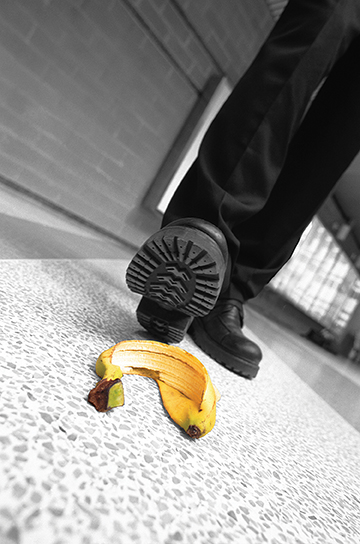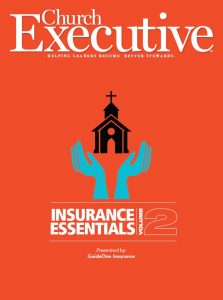
By Eric Spacek, JD, ARM
![]()
Accidents happen; it’s inevitable. And when those accidents occur, it can be a scary time for both the injured party and the church. When such events take place and the injured party files a claim against the church, it’s called a liability claim.
 “Liability” is the legal term for “fault.” A liability claim is a demand for money to compensate someone for his or her injuries or damages. Often, these claims are presented by the injured or damaged party to the potential party at fault in the form of a lawsuit. An organization (church) is responsible for such injuries if it is proven negligent.
“Liability” is the legal term for “fault.” A liability claim is a demand for money to compensate someone for his or her injuries or damages. Often, these claims are presented by the injured or damaged party to the potential party at fault in the form of a lawsuit. An organization (church) is responsible for such injuries if it is proven negligent.
Example: Jane enters a church building and slips on the floor leading to the stairway. Jane lands on her hip and is unable to walk for an extended period of time. She believes the church is at fault and wants compensation for her injuries. Jane is advised by her attorney to file a liability claim against the church. Jane’s legal counsel must prove the church was responsible, or negligent, to receive compensation.
Outcome: In this example, the floor upon entering the building was wet from the winter weather, and there were no “wet floor” signs or other means of communication warning members as they entered. The church was negligent in providing proper care to its attendees and must compensate Jane for her damages.
The example above is one of the most common liability claims churches face. What happens when this (or any) type of claim is filed against your church? Before you react, consider the tips below.
Make no admissions of liability. Do not acknowledge or deny responsibility when an accident occurs. Tell the injured party that your church will report the incident to its insurance company, and the insurance company will be contact with them directly. This avoids taking responsibility for something that may not be the church’s fault.
Gather all relevant facts. Capture names and contact information for all parties involved, or who might have information on what occurred (especially witnesses). Immediately take photos of the scene of the incident, if applicable. Lastly, complete an incident report to record the event.
Leave the scene untouched. Ensure the area is properly blocked off and left alone until you have spoken with an adjuster.

Secure equipment. Any items or equipment involved in the accident should be placed in a locked area once you have spoken with your adjuster and kept there until they can be inspected (ladders, chairs and so on).
Report the loss. Immediately report the incident to your church’s insurance company and / or agent.
If the claim involves issues that are potentially criminal in nature (allegations of physical or sexual abuse), immediately report it to the proper authorities.
If the claim involves minors, be sure to avoid disclosing names or details to other parties.
In scenarios such as the one previously mentioned, it’s easy to overreact and try to make up for the situation that just occurred. The most common mistake churches make in these types of incidents is admitting liability or making offers of assistance that they are not authorized to make. It’s important to note that just because someone initially says they are not injured or that they aren’t filing a claim, doesn’t mean they won’t change their mind at some point in the future. Ensure all accident-related information is documented and reported immediately to avoid a much larger issue later on.
Church liability claims can prove to be very costly to settle. As a church facility that is liable for more than just the building itself, it’s important to have proper maintenance procedures and be proactive in loss prevention. This will help to reduce the risk of a liability claim against your church, and make for happy and safe congregants.
Eric Spacek, JD, ARM is the Director of Risk Management and Loss Control at GuideOne Insurance in West Des Moines, IA. Before joining GuideOne, Spacek served as Minister of Operations for a large Methodist church in Raleigh, N.C., and was a liability litigation trial attorney in Washington, D.C.


